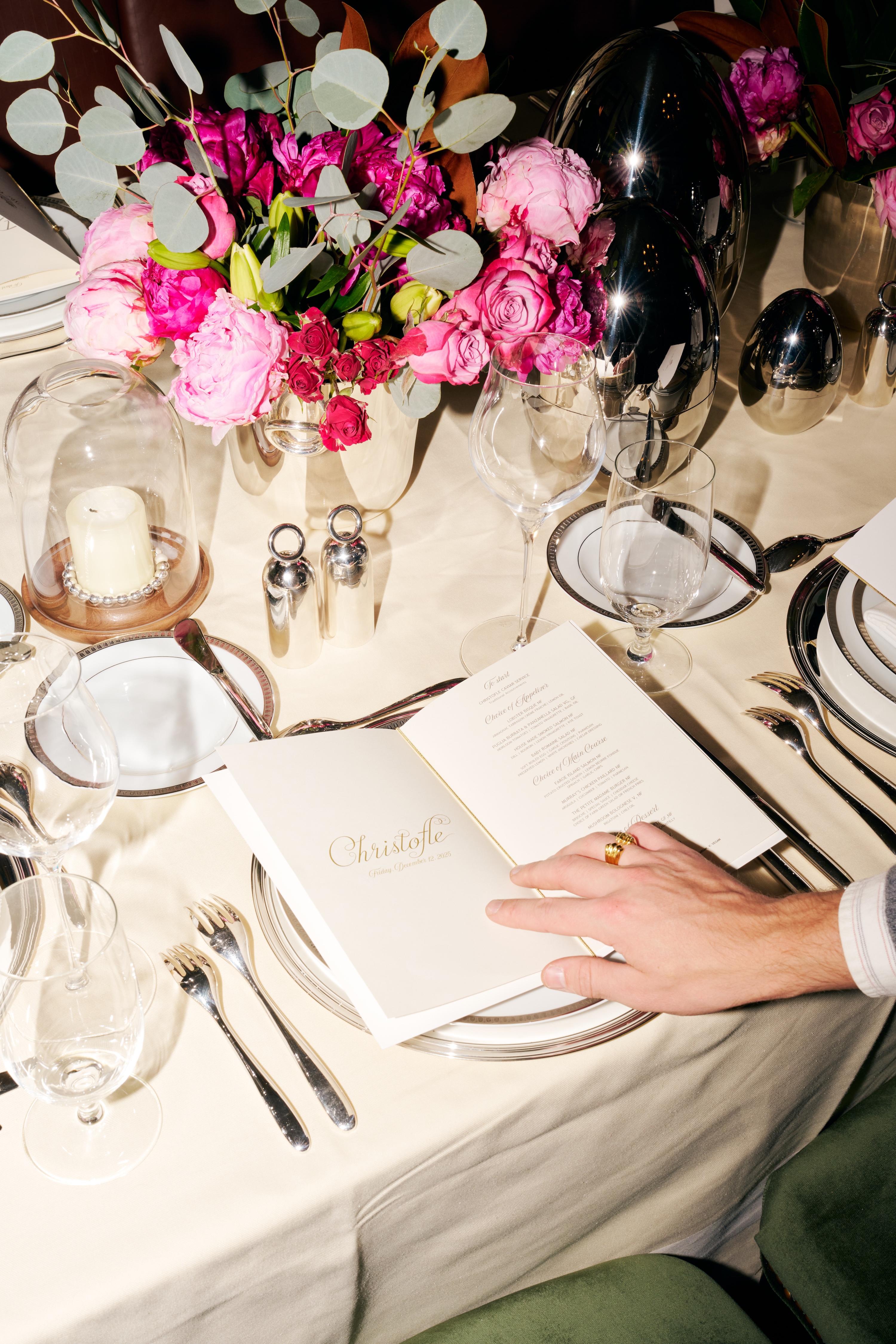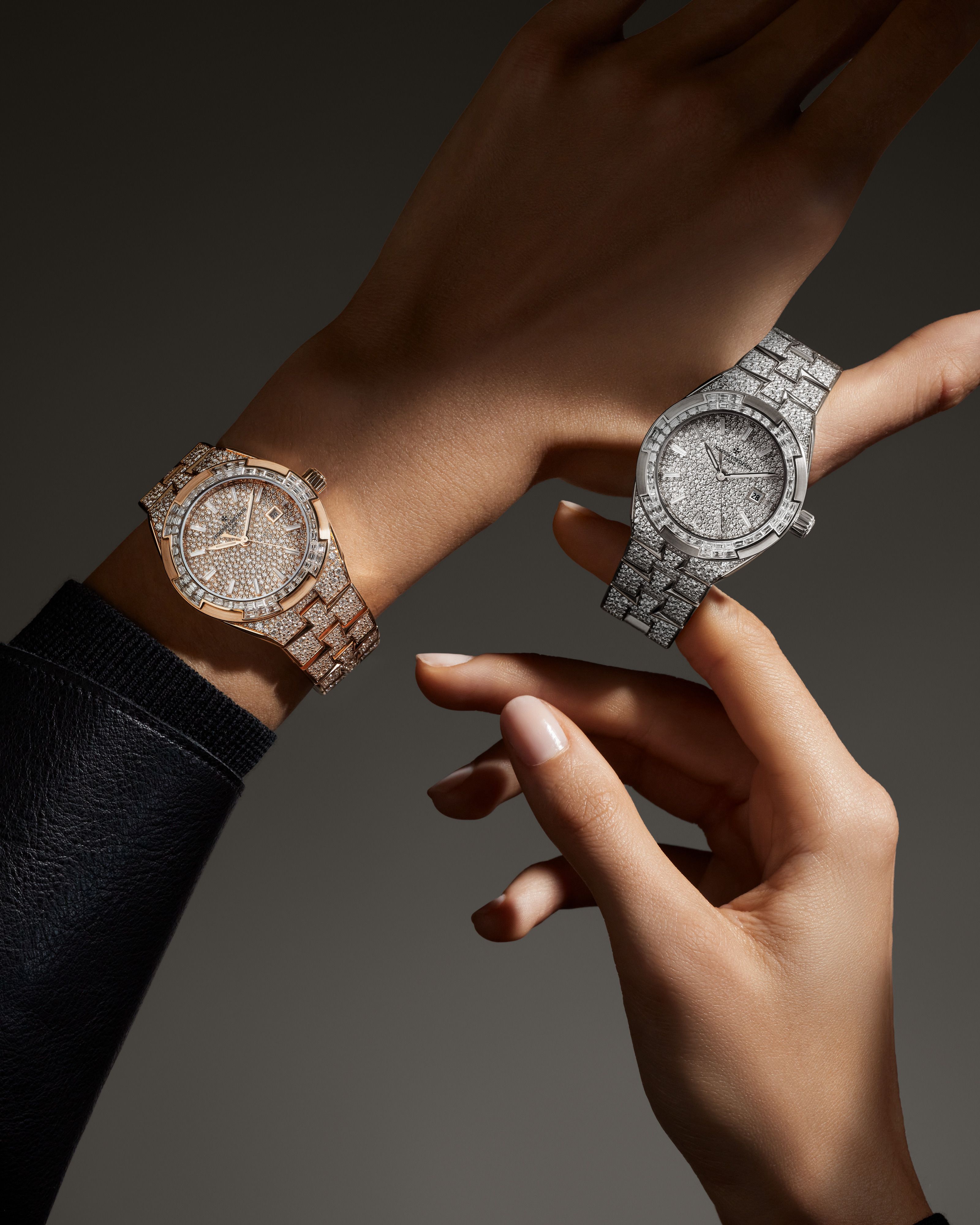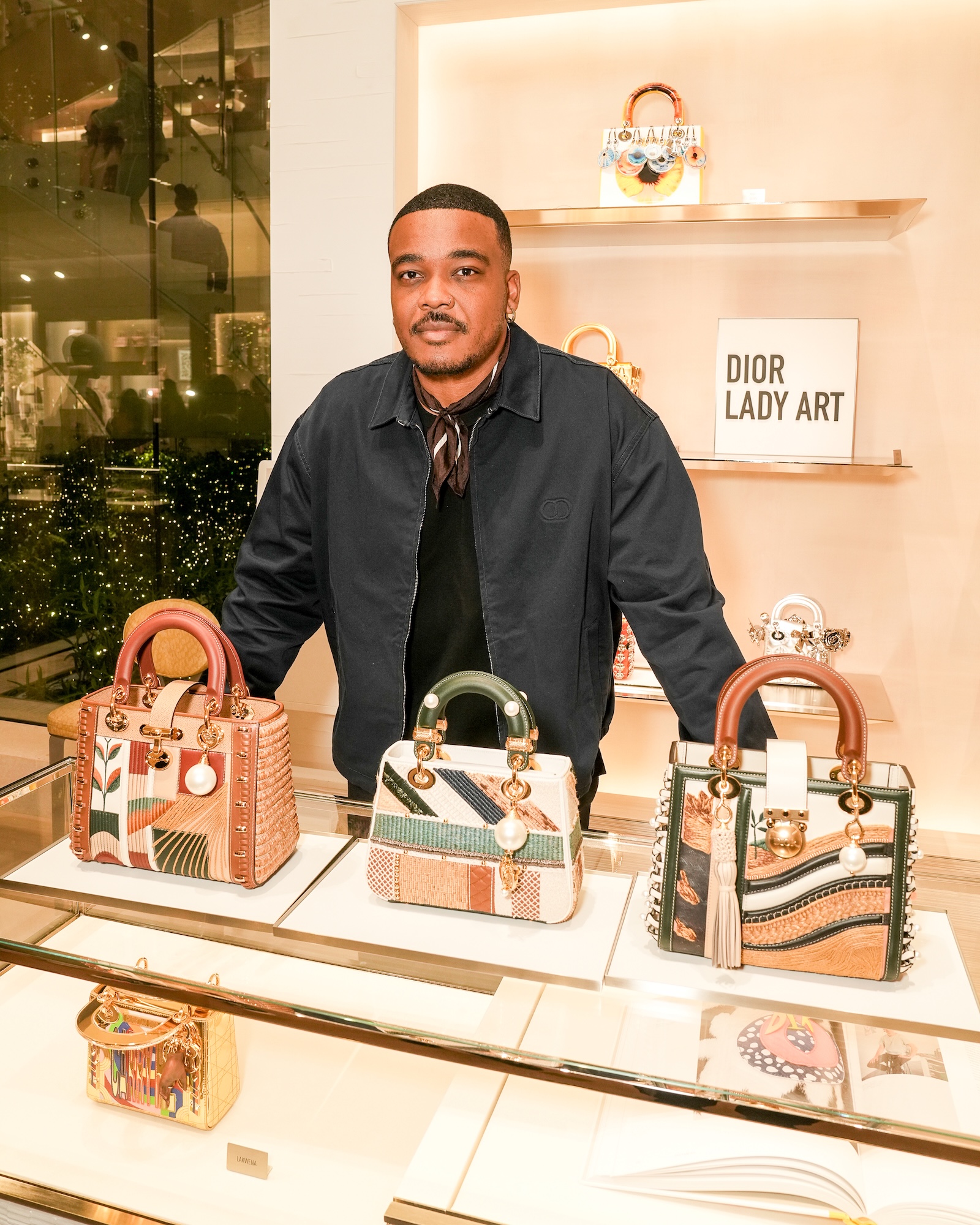The conditions of the impact of COVID-19 on the luxury sector have left huge negative marks. All the premium houses and brands suffered significant losses in the first quarter and will continue to suffer in the second. But in the medium and longer-term, what future structural changes will the luxury sector face? How can we help luxury brands to navigate a post covid world? [Portia Antonia Alexis,](https://twitter.com/portiaantonia) a leading consumer goods analyst, will decode and answer the big questions around COVID-19 and the luxury sector.


**We know COVID-19 negatively impacted numerous industries, especially tourism. How do you assess the pandemic's impact on the luxury sector?**
The Covid-19 pandemic has indeed caught some industries off guard. As tourism is particularly affected, this has had repercussions on other industries such as the luxury sector, which is not spared. As far as I'm concerned, Covid-19 is a real shock for the luxury sector because luxury brands were reaching the skies during the previous years.
Undoubtedly, this crisis' impact is not without consequence; the fact that Luxury Brands had to close during the lockdown caused their turnover to plummet. I can give you the example of Hermès, which lost 25% of its turnover in the first half of 2020.
**No doubt these numbers are scary for all people working in the luxury sector. How can you explain them?**
The lockdown has logically brought its share of uncertainties on both demand and supply. As governments announced national lockdowns for an indefinite time, and the media kept speculating, luxury consumers naturally adopted new purchasing habits. During the COVID-19 crisis, people were happy to buy more hygiene products, food, and other essential products. In contrast, the luxury consumer's wallet was no longer extended for luxury products.


**As there is a shift in purchasing habits of luxury consumers due to the pandemic, can you tell us more about luxury consumers' nature?**
While talking about luxury consumers' nature, the Chinese weigh 1/3 of the luxury consumers. It’s estimated that a drop of only 10% in Chinese consumption of luxury goods would lead to a 2% erosion of turnover and 4% of net profits of luxury brands. With such exposure to Chinese demand, luxury brands have suffered as Chinese tourists have stopped traveling. And it's not the stopping of travel that’s a game-changer.
**Speaking about tourism, it’s undoubtedly the most affected sector during this pandemic. Do you believe the considerable fall in the tourism sector had an impact on the luxury sector?**
If you go to any airport, you’ll notice numerous Luxury brands there. This sales channel, commonly called travel retail in the sector, can represent between 20% and 30% of the total sales of luxury brands. In 2016, I observed that the market shares of duty-free stores were substantial in most of the market segments occupied by luxury brands. Imagine the economic impact when you consider that in 2020, international travel fell between 44% and 80%, depending on the destination. Experts estimate that it will take 3 years to return to passenger transport activity levels equivalent to the pre-COVID period.
**Taking into consideration all these factors, how Luxury Brands Navigate a Post Covid World?**
I don't believe we’re yet done with the COVID-19 to talk about a post-Covid world. However, history has shown us that Luxury Brands must prepare in advance for this era. One of the critical components to navigate this period is to appeal to the local clients. Most Luxury Brands rely on foreigners to sell their products. However, I believe with the Coronavirus travel restrictions, it’s highly the time to appeal to the local consumers. These clients, which have been set apart for several years, must be won back by the luxury sector. The challenge is to position oneself on these local consumers' desires who certainly have a lower budget but genuine and just as picky desires. Therefore, we must take into account their specific requirements, currently focused on the relationships and digital. For this, luxury brands must provide a better offer to the local customers to retain them, unlike international customers who often only visited the same store once.
 
**We know COVID-19 negatively impacted numerous industries, especially tourism. How do you assess the pandemic's impact on the luxury sector?**
The Covid-19 pandemic has indeed caught some industries off guard. As tourism is particularly affected, this has had repercussions on other industries such as the luxury sector, which is not spared. As far as I'm concerned, Covid-19 is a real shock for the luxury sector because luxury brands were reaching the skies during the previous years.
Undoubtedly, this crisis' impact is not without consequence; the fact that Luxury Brands had to close during the lockdown caused their turnover to plummet. I can give you the example of Hermès, which lost 25% of its turnover in the first half of 2020.
**No doubt these numbers are scary for all people working in the luxury sector. How can you explain them?**
The lockdown has logically brought its share of uncertainties on both demand and supply. As governments announced national lockdowns for an indefinite time, and the media kept speculating, luxury consumers naturally adopted new purchasing habits. During the COVID-19 crisis, people were happy to buy more hygiene products, food, and other essential products. In contrast, the luxury consumer's wallet was no longer extended for luxury products.

**We know COVID-19 negatively impacted numerous industries, especially tourism. How do you assess the pandemic's impact on the luxury sector?**
The Covid-19 pandemic has indeed caught some industries off guard. As tourism is particularly affected, this has had repercussions on other industries such as the luxury sector, which is not spared. As far as I'm concerned, Covid-19 is a real shock for the luxury sector because luxury brands were reaching the skies during the previous years.
Undoubtedly, this crisis' impact is not without consequence; the fact that Luxury Brands had to close during the lockdown caused their turnover to plummet. I can give you the example of Hermès, which lost 25% of its turnover in the first half of 2020.
**No doubt these numbers are scary for all people working in the luxury sector. How can you explain them?**
The lockdown has logically brought its share of uncertainties on both demand and supply. As governments announced national lockdowns for an indefinite time, and the media kept speculating, luxury consumers naturally adopted new purchasing habits. During the COVID-19 crisis, people were happy to buy more hygiene products, food, and other essential products. In contrast, the luxury consumer's wallet was no longer extended for luxury products.
 
**As there is a shift in purchasing habits of luxury consumers due to the pandemic, can you tell us more about luxury consumers' nature?**
While talking about luxury consumers' nature, the Chinese weigh 1/3 of the luxury consumers. It’s estimated that a drop of only 10% in Chinese consumption of luxury goods would lead to a 2% erosion of turnover and 4% of net profits of luxury brands. With such exposure to Chinese demand, luxury brands have suffered as Chinese tourists have stopped traveling. And it's not the stopping of travel that’s a game-changer.
**Speaking about tourism, it’s undoubtedly the most affected sector during this pandemic. Do you believe the considerable fall in the tourism sector had an impact on the luxury sector?**
If you go to any airport, you’ll notice numerous Luxury brands there. This sales channel, commonly called travel retail in the sector, can represent between 20% and 30% of the total sales of luxury brands. In 2016, I observed that the market shares of duty-free stores were substantial in most of the market segments occupied by luxury brands. Imagine the economic impact when you consider that in 2020, international travel fell between 44% and 80%, depending on the destination. Experts estimate that it will take 3 years to return to passenger transport activity levels equivalent to the pre-COVID period.
**Taking into consideration all these factors, how Luxury Brands Navigate a Post Covid World?**
I don't believe we’re yet done with the COVID-19 to talk about a post-Covid world. However, history has shown us that Luxury Brands must prepare in advance for this era. One of the critical components to navigate this period is to appeal to the local clients. Most Luxury Brands rely on foreigners to sell their products. However, I believe with the Coronavirus travel restrictions, it’s highly the time to appeal to the local consumers. These clients, which have been set apart for several years, must be won back by the luxury sector. The challenge is to position oneself on these local consumers' desires who certainly have a lower budget but genuine and just as picky desires. Therefore, we must take into account their specific requirements, currently focused on the relationships and digital. For this, luxury brands must provide a better offer to the local customers to retain them, unlike international customers who often only visited the same store once.

**As there is a shift in purchasing habits of luxury consumers due to the pandemic, can you tell us more about luxury consumers' nature?**
While talking about luxury consumers' nature, the Chinese weigh 1/3 of the luxury consumers. It’s estimated that a drop of only 10% in Chinese consumption of luxury goods would lead to a 2% erosion of turnover and 4% of net profits of luxury brands. With such exposure to Chinese demand, luxury brands have suffered as Chinese tourists have stopped traveling. And it's not the stopping of travel that’s a game-changer.
**Speaking about tourism, it’s undoubtedly the most affected sector during this pandemic. Do you believe the considerable fall in the tourism sector had an impact on the luxury sector?**
If you go to any airport, you’ll notice numerous Luxury brands there. This sales channel, commonly called travel retail in the sector, can represent between 20% and 30% of the total sales of luxury brands. In 2016, I observed that the market shares of duty-free stores were substantial in most of the market segments occupied by luxury brands. Imagine the economic impact when you consider that in 2020, international travel fell between 44% and 80%, depending on the destination. Experts estimate that it will take 3 years to return to passenger transport activity levels equivalent to the pre-COVID period.
**Taking into consideration all these factors, how Luxury Brands Navigate a Post Covid World?**
I don't believe we’re yet done with the COVID-19 to talk about a post-Covid world. However, history has shown us that Luxury Brands must prepare in advance for this era. One of the critical components to navigate this period is to appeal to the local clients. Most Luxury Brands rely on foreigners to sell their products. However, I believe with the Coronavirus travel restrictions, it’s highly the time to appeal to the local consumers. These clients, which have been set apart for several years, must be won back by the luxury sector. The challenge is to position oneself on these local consumers' desires who certainly have a lower budget but genuine and just as picky desires. Therefore, we must take into account their specific requirements, currently focused on the relationships and digital. For this, luxury brands must provide a better offer to the local customers to retain them, unlike international customers who often only visited the same store once.









.JPG)
.jpg)







